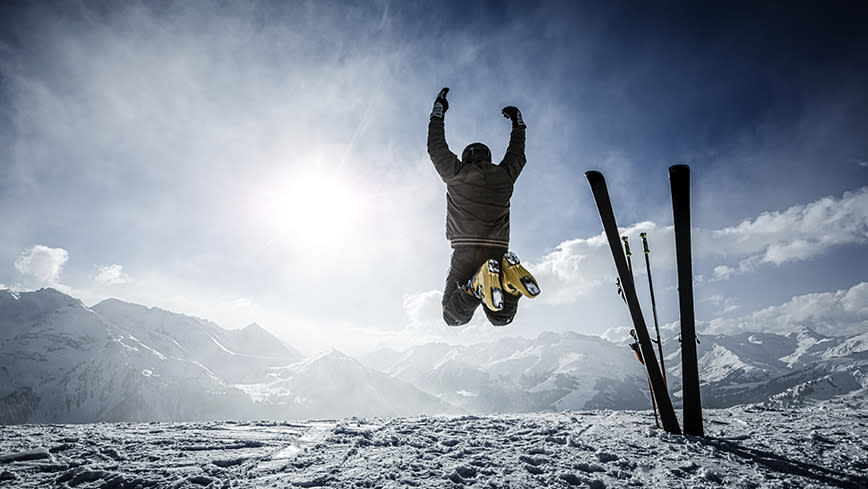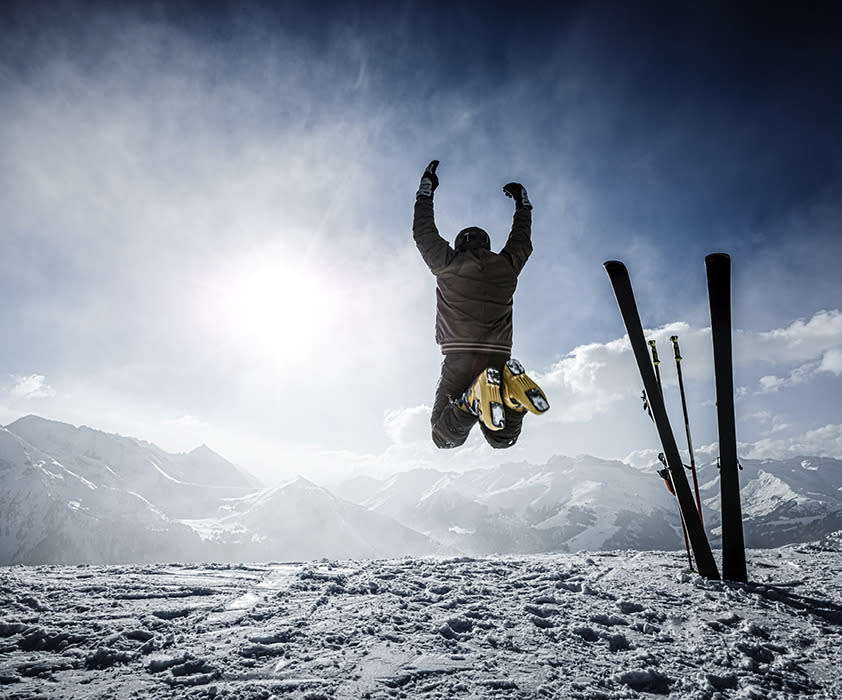Australian skiers face heavy winter wipe-outs
With the Australian ski season just around the corner, a growing number of Aussies are choosing to ski in their own backyards rather than abroad. Thredbo sees approximately 700,000 hitting its powdery snow fields each year, whilst Victoria’s Mt Buller can regularly host over 10,000 skiers or boarders on any given day.
Whether at home or away, Australians that disregard ski insurance for their ski trip are in serious danger of being exposed to enormous medical expenses.
Natalie Ball, Director, comparetravelinsurance.com.au says:
“It doesn’t matter if you’re hitting the slopes here in Australia, or overseas – a ski insurance policy is vital! Many Australians head to the local slopes for a weekend without considering a policy. They simply are not aware of the costs associated with mountain rescue, let alone cover for their equipment. Even if you’re heading to the Australian slopes for a couple of days, travel insurance should be top of mind.”
A dodgy slip on the slopes can cost you far more than your dignity.
There are HUGE costs associated with medical treatment and rescue on the slopes. Should you require an emergency rescue, the cost of skidoo/helicopter evacuation from the mountain in Europe can cost more than $10,000.
So what about at home? Whether by road or air, Medicare does not cover the cost of ambulance services. In NSW you can expect to pay up to $5,000 for a helicopter call-out. A road ambulance from the ski fields to the nearest hospital would cost you over $500 whilst a trip from your snow resort to the nearest major hospital would set you back more than $1,000.
Whilst a private health policy would cover the cost of ambulance services, you may not be covered when you’re in other states. For instance, GHMBA health insurance holders in NSW, ACT, Queensland or Tasmania would only be covered for ambulance within their home states.
On the other hand, a ski insurance policy would reimburse these costs of emergency transfer or evacuation from any operating ski resort in Australia.
“With mountain rescue in the thousands of dollars, and domestic ski policies for a weekend as little as $33. You’d be crazy not to buy a policy. Accidents can happen whether you’re a beginner or expert skier” says Natalie.
Most snow revellers are blissfully unaware of the dangers, but skiing can be a perilous sport!
Schoolgirl Hannah Taylor’s death sent shockwaves through Thredbo after she skied into a tree in 2009. A few years later two snowboarders suffered fatal collisions on a treacherous Thredbo run - just months apart. And only last year a Queensland man tragically lost his life on an intermediate run in Perisher.
Statistics show that injury rates in Aussie snowfields can range anywhere between 1.5 and 3.9 injuries per 1000 visitor days. Accidents most frequently occur in inexperienced skiers and boarders and the most common skiing injuries tend to be focused on the knee, head and spinal column. Plenty of injuries are associated with poor control, outdated equipment, as well as a lack of fitness and good judgement.
Top tips: safety for the slopes
Rules rule on the slopes: Much like on the road, the skier in front always has priority. Similarly, skiers should adjust their speed and style in accordance to their abilities and general conditions.
Take note of your surroundings: Awareness is everything. Glancing around and looking uphill before setting off is the best way to avoid collisions.
Helmets prevent hazards: It’s an indisputable fact that helmets save lives. Note that whilst wearing a helmet can ward off some injuries, you must still exercise caution at all times. Additionally, should you incur an injury without wearing a helmet, your claim would most likely be rejected.
Dress to impress: The weather can change radically at high altitudes. Multiple layers are better than one and thin, protective socks, a hat and gloves can prepare you for a multitude of conditions.
Take breaks: At freezing temperatures you run the risk of primary frostbite. Get out of the cold every once in a while and replace all wet clothing with dry, insulated layers.
Avoid breakout performances: If you’re not at star skier levels yet, avoid showman efforts. Avoid pressure to try a black run if you’re simply not ready. Inexperienced skiers are usually most prone to injuries.
Throw some shade: The better you see, the better you ski. It may seem strange to first time skiers but shades are essential for the snow. The combined efforts of wind, sun and glare can do a lot of damage to your eyes. A good hardy set of goggles suit foggy, windswept weather whilst stylish shades are perfect for blue sky days
Whether you break a leg and need to be rescued or have had your gear stolen out of your locker whilst having lunch, travel insurance will pick up the tab. Even the most experienced skiers and snowboarders can face a wipe-out of sort. Insurance provides snow revellers with a comforting safety net should things go wrong.
What’s covered in ski insurance?
Much like a standard policy, ski insurance will cover you for all the usual ‘what-ifs’ (like cancellation, lost or stolen belongings, personal liability, travel delays etc.), as well as some added specific snow-sports benefits, such as:
Emergency medical treatment: A waylaid run can sap your wallet faster than a snowballing avalanche. Should you injure yourself, a winter sports policy will cover you for any medical treatment required when overseas.
Emergency rescue: The cost of skidoo/helicopter evacuation from the mountain can cost more than $10,000. Most ski policies will reimburse these costs but may carry restrictions depending on where you were skiing during the accident.
Snow-sports equipment: A good ski insurance policy will cover you for theft of rental skis/snowboard gear (provided it was locked away). You will also be covered for damage to your hired skis and for the cost of renting alternative equipment should you need to. Note that cover limits apply.
Ski pack: If you have pre-booked a ski pass, equipment hire, ski lessons or lift passes, you will be reimbursed should there be bad weather and you can’t ski, if you injure yourself, fall ill, or your passes are stolen.
Piste closure: Ski run closure shouldn’t burst your bubble. Ski insurance will either pay for you to travel to an alternate location or compensate you.
Bad weather and avalanche closure: Ski insurance will cover your expenses should hazardous weather or an avalanche force you to cancel.
You’re often not covered for...
Sip and ski: Fancy a toasty tipple or warming wine by the fireside? A rowdy après ski session could see you risking your cover. Be warned that an alcohol or drug fuelled claim will be rejected.
Risky business: Looking to ramp up your adrenalin charge? Most ski policies will only cover you for recreational skiing and snowboarding, whereas cover for riskier activities such as competitive skiing, heli-skiing/boarding, cat skiing, ice hockey, mountaineering and bob sleighing is harder to find. If you’re happy to pay an added premium, 1st for Women, Budget Direct, Insure and Go, Ski-insurance.com.au, TID and World Nomads will provide cover for heli-skiing provided you do so with a licensed tour operator. Ski-insurance.com.au also provides cover for competitive skiing.
Skiing off piste: Most insurers won’t cover you for backcountry skiing. If you’re really craving a remote mountainside run, insurers 1Cover, 1st for Women, Budget Direct, Insure and Go, Ski-insurance.com.au, TID, and World Nomads will cover you provided you stay within resort boundaries with a qualified instructor.
Off season skiing: Some insurers will not cover you in off peak seasons as safety provisions are fairly limited at these times. However, some companies such as ski-insurance.com.au will provide insurance so long as there is enough snow on the ground to ski!
Whether you’re planning to tear up the slopes in Thredbo or shred powder in Whistler, it’s essential to pack ski insurance. Without cover, your trip can slip from bad to worse faster than an avalanche.



